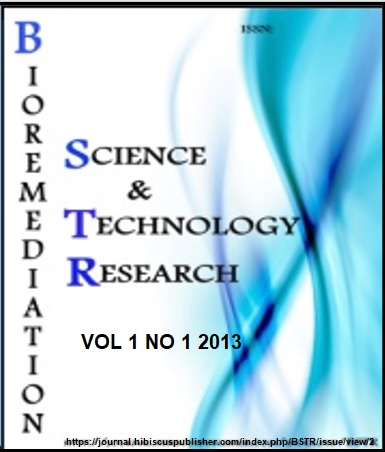Monitoring of heavy metals level in fish using Photobacterium sp. strain MIE
DOI:
https://doi.org/10.54987/bstr.v1i1.10Keywords:
Isolation, tropical, Bioassay, Photobacterium sp., copperAbstract
Luminescence-based assays for toxicants such as Microtox®, ToxAlert™ and Biotox™ have been used extensively worldwide. However, the use of these assays in near real-time conditions is limited due to nonoptimal assay temperature for the tropical climate. An aerobic isolate that exhibits a high luminescence activity in a broad range of temperatures was successfully isolated from the mackerel, Rastrelliger kanagurta. This isolate was tentatively identified as Photobacterium sp. strain MIE, based on partial 16S rDNA molecular phylogeny. Optimum conditions that support high bioluminescence activity occurred between 24 and 30 oC, pH 5.5 and 7.5, 10 and 20 g/L of sodium chloride, 30 and 50 g/L of tryptone, and 4 g/L of glycerol as the carbon source. Assessment of near real-time capability of this bacterium for heavy metals in a contaminated river running through the Juru River Basin that fed a large agriculture area has shown near real-time capability with assaying time of less than 30 min per samples. Thus, this strain is suitable for near real-time monitoring of toxicants especially in the tropics
Downloads
Published
How to Cite
Issue
Section
License
Authors who publish with this journal agree to the following terms:
- Authors retain copyright and grant the journal right of first publication with the work simultaneously licensed under a Creative Commons Attribution License (http://creativecommons.org/licenses/by/4.0) that allows others to share the work with an acknowledgement of the work's authorship and initial publication in this journal.
- Authors are able to enter into separate, additional contractual arrangements for the non-exclusive distribution of the journal's published version of the work (e.g., post it to an institutional repository or publish it in a book), with an acknowledgement of its initial publication in this journal.
- Authors are permitted and encouraged to post their work online (e.g., in institutional repositories or on their website) prior to and during the submission process, as it can lead to productive exchanges, as well as earlier and greater citation of published work (See The Effect of Open Access).


